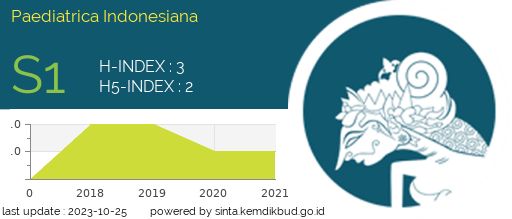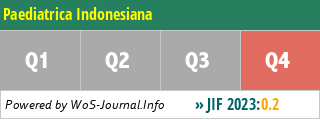Associations between genomic copy number alterations and clinical and laboratory results in pediatric B-cell acute lymphoblastic leukemia
Keywords:
acute lymphoblastic leukemia; pediatrics; CNA; MLPAAbstract
Background Copy Number Alterations (CNAs) are changes in DNA structure that lead to gain or loss of copies of DNA sections in the genome. They correlate with unfavorable prognostic outcomes in pediatric leukemia, influencing treatment resistance, relapse rates, and overall survival. Identifying high-risk patients with a likelihood of CNA positivity is essential for understanding its association with clinical characteristics and laboratory findings. Since routine CNA testing is costly, recognizing simple clinical and laboratory markers that predict CNA presence can help focus screening efforts, enabling more efficient risk stratification and prognosis assessment in acute leukemia
Objective To describe the characteristics and analyze for associations between CNA, clinical characteristics, and laboratory findings in pediatric ALL patients.
Methods This cross-sectional observational study included B-cell acute lymphoblastic leukemia (ALL) patients from three hospitals, excluding those above 18 years. Data collected encompassed demographics, clinical features, and laboratory results. We performed multiplex ligation-dependent probe amplification (MLPA) testing to identify CNA positivity.
Results From January to December 2019, there were 74 pediatric ALL patients incuded in our study; 26 of them had positive results and the remaining 48 had negative results. CNA-positive status was commonly found in subjects aged ? 5 years (38.6%), while CNA-negative status was highest in patients aged ? 10 years (72.7%). CNA-positive status was significantly higher in patients with lymphadenopathy, lower hemoglobin level (7.73 g/dL), and lower platelet level (52,019/µL) (P<0.05).
Conclusion Patients with lymphadenopathy, lower hemoglobin, and lower platelet levels are more likely to test positive for CNA. However, more research is needed to fully understand the implications of this finding and its potential impact on patient care.
References
Shawahna R, Mosleh S, Odeh Y, Halawa R, Al-Ghoul M. Clinical characteristics and outcomes of patients with pediatric acute lymphoblastic leukemia after induction of chemotherapy: a pilot descriptive correlational study from Palestine. BMC Res Notes. 2021;14:259. DOI: https://doi.org/10.1186/s13104-021-05678-6
Bedics G, Egyed B, Kotmayer L, Benard-Slagter A, de Groot K, Beko A, et al. PersonALL: a genetic scoring guide for personalized risk assessment in pediatric B-cell precursor acute lymphoblastic leukemia. Br J Cancer. 2023;129:455-65. DOI: https://doi.org/10.1038/s41416-023-02309-8
Agarwal M, Seth R, Chatterjee T. Recent advances in molecular diagnosis and prognosis of childhood B cell lineage acute lymphoblastic leukemia (B-ALL). Indian J Hematol Blood Transfus. 2021;37:10-20. doi:10.1007/s12288-020-01295-8
Yametti GPC, Ostrow TH, Jasinski S, Raetz EA, Carroll WL, Evensen NA. Minimal residual disease in acute lymphoblastic leukemia. Indian J Med Paediatr Oncol. 2021;42:71-6. DOI: https://doi.org/10.3390/cancers13081847
Kansal R. Diagnosis and molecular pathology of lymphoblastic leukemias and lymphomas in the era of genomics and precision medicine: historical evolution and current concepts—Part 3: Mature leukemias/lymphomas. Lymphatics. 2023;1:155-219. DOI: https://doi.org/10.3390/lymphatics1020012
Bateman CM, Alpar D, Ford AM, Colman SM, Wren D, Morgan M, et al. Evolutionary trajectories of hyperdiploid ALL in monozygotic twins. Leukemia. 2015;29:58-65. DOI: https://doi.org/10.1038/leu.2014.177
Forero-Castro M, Robledo C, Benito R, Abáigar M, África Martín A, Arefi M, et al. Genome-wide DNA copy number analysis of acute lymphoblastic leukemia identifies new genetic markers associated with clinical outcome. PLoS One. 2016;11:e0148972. DOI: https://doi.org/10.1371/journal.pone.0148972
Paulsson K, Lilljebjörn H, Biloglav A, Olsson L, Rissler M, Castor A, et al. The genomic landscape of high hyperdiploid childhood acute lymphoblastic leukemia. Nat Genet. 2015;47:672-6. DOI: https://doi.org/10.1038/ng.3301
Kiss R, Gángó A, Benard-Slagter A, Egyed B, Haltrich I, Hegyi L, et al. Comprehensive profiling of disease-relevant copy number aberrations for advanced clinical diagnostics of pediatric acute lymphoblastic leukemia. Mod Pathol. 2020;33:812-24. DOI: https://doi.org/10.1038/s41379-019-0423-5
Nisar I, Shahid S, Yousuf F, Lakhani LS, Ashraf S, Imam U, et al. Treatment outcomes and prognostic factors of childhood acute lymphoblastic leukemia in a low-middle income population: a multi-institutional report from Pakistan. Pediatr Blood Cancer. 2023;70:e29889. DOI: https://doi.org/10.1002/pbc.29889
Gupta SK, Singh M, Chandrashekar PH, Bakhshi S, Trehan A, Gupta R, et al. Clinical and prognostic impact of copy number alterations and associated risk profiles in a cohort of pediatric B-cell precursor acute lymphoblastic leukemia cases treated under ICiCLe Protocol. HemaSphere. 2022;6:e782. DOI: https://doi.org/10.1097/HS9.0000000000000782
Steeghs EMP, Boer JM, Hoogkamer AQ, et al. Copy number alterations in B-cell development genes, drug resistance, and clinical outcome in pediatric B-cell precursor acute lymphoblastic leukemia. Sci Rep. 2019;9:4634. DOI: https://doi.org/10.1038/s41598-019-41078-4
Tao Z, Wang S, Wu C, et al. The repertoire of copy number alteration signatures in human cancer. Brief Bioinform. 2023;24:bbad053. DOI: https://doi.org/10.1093/bib/bbad053
Steele CD, Abbasi A, Islam SMA, et al. Signatures of copy number alterations in human cancer. Nature. 2022;606:984-91. DOI: https://doi.org/10.1038/s41586-022-04738-6
Yao H, Li H, Wang J, et al. Copy number alteration features in pan-cancer homologous recombination deficiency prediction and biology. Commun Biol. 2023;6:527. DOI: https://doi.org/10.1038/s42003-023-04901-3
Pour Feizi AH, Zeinali S, Toporski J, Sheervalilou R, Mehranfar S. Frequency and correlation of common genes copy number alterations in childhood acute lymphoblastic leukemia with prognosis. Asian Pacific J Cancer Prev. 2020;21:3493-500. DOI: https://doi.org/10.31557/APJCP.2020.21.12.3493
Zhou Y, You MJ, Young KH, Lin P, Lu G, Medeiros LJ, et al. Advances in the molecular pathobiology of B-lymphoblastic leukemia. Hum Pathol. 2012;43:1347-62. DOI: https://doi.org/10.1016/j.humpath.2012.02.004
R Rosales-Rodríguez B, Núñez-Enríquez JC, Velázquez-Wong AC, González-Torres C, Gaytán-Cervantes J, Jiménez-Hernández E, et al. Copy number alterations are associated with the risk of very early relapse in pediatric B-lineage acute lymphoblastic leukemia: a nested case-control MIGICCL study. Arch Med Res. 2021;52:414-22. DOI: https://doi.org/10.1016/j.arcmed.2020.12.013
Ampatzidou M, Florentin L, Papadakis V, Paterakis G, Tzanoudaki M, Bouzarelou D, et al. Copy number alteration profile provides additional prognostic value for acute lymphoblastic leukemia patients treated on BFM protocols. Cancers (Basel). 2021;13:3289. DOI: https://doi.org/10.3390/cancers13133289
Krentz S, Hof J, Mendioroz A, Vaggopoulou R, Dörge P, Lottaz C, et al. Prognostic value of genetic alterations in children with first bone marrow relapse of childhood B-cell precursor acute lymphoblastic leukemia. Leukemia. 2013;27:295-304. DOI: https://doi.org/10.1038/leu.2012.155
Grant CN, Aldrink J, Lautz TB, Tracy ET, Rhee DS, Baertschiger RM, et al. Lymphadenopathy in children: a streamlined approach for the surgeon — a report from the APSA Cancer Committee. J Pediatr Surg. 2021;56:274-81. DOI: https://doi.org/10.1016/j.jpedsurg.2020.09.058
Friedmann AM. Evaluation and management of lymphadenopathy in children. Pediatr Rev. 2008;29:53-60. DOI: https://doi.org/10.1542/pir.29-2-53
Bazemore AW, Smucker DR. Lymphadenopathy and malignancy. Am Fam Physician. 2002;66(11):2103-2110. PMID: 12484692.
Bordini BJ. Lymphadenopathy and neck masses. In: Kliegman RM, Lye PS, Bordini BJ, Toth H, Basel D, eds. Nelson pediatric symptom-based diagnosis. Elsevier;2018. p. 647-660.e1. ISBN: 9780323399562. DOI: https://doi.org/10.1016/B978-0-323-39956-2.00036-4
NHS Trust. Lymphadenopathy and Lymphadenitis Paediatric Clinical Practice Guideline. [cited 2023 December 10 ]. Available from: https://ashfordstpeters.net/Guidelines_Paediatrics/Lymphadenopathy%20and%20Lymphadenitis%20Aug%202019.pdf.
Ganeshalingam S, Koh DM. Nodal staging. Cancer Imaging. 2009;9:104-11. DOI: https://doi.org/10.1102/1470-7330.2009.0017
Chau I, Kelleher MT, Cunningham D, Norman AR, Wotherspoon A, Trott P, et al. Rapid access multidisciplinary lymph node diagnostic clinic: analysis of 550 patients. Br J Cancer. 2003;88:354-61. DOI: https://doi.org/10.1038/sj.bjc.6600738
Al-Mulla NA, Chandra P, Khattab M, Madanat F, Vossough P, Torfa E, et al. Childhood acute lymphoblastic leukemia in the Middle East and neighboring countries: a prospective multi-institutional international collaborative study (CALLME1) by the Middle East Childhood Cancer Alliance (MECCA). Pediatr Blood Cancer. 2014;61:1403-10. DOI: https://doi.org/10.1002/pbc.25031
Halalsheh H, Abuirmeileh N, Rihani R, Bazzeh F, Zaru L, Madanat F. Outcome of childhood acute lymphoblastic leukemia in Jordan. Pediatr Blood Cancer. 2011;57:385-91. DOI: https://doi.org/10.1002/pbc.23065
Lustosa de Sousa DW, de Almeida Ferreira FV, Cavalcante Félix FH, de Oliveira Lopes MV. Acute lymphoblastic leukemia in children and adolescents: prognostic factors and analysis of survival. Rev Bras Hematol Hemoter. 2015;37:223-9. DOI: https://doi.org/10.1016/j.bjhh.2015.03.009
Kaplan JA. Leukemia in children. Pediatr Rev. 2019;40:319-31. DOI: https://doi.org/10.1542/pir.2018-0192
Tanaka H, Ono T, Manabe Y, Kajima M, Fujimoto K, Yuasa Y, et al. Anemia is a prognostic factor for overall survival rate in patients with non-small cell lung cancer treated with stereotactic body radiation therapy. Cancer Manag Res. 2021;13:7447-53. DOI: https://doi.org/10.2147/CMAR.S336044
Wei J, Xiang J, Hao Y, Si J, Wang W, Li F, et al. Baseline anemia predicts a poor prognosis in patients with non-small cell lung cancer with epidermal growth factor receptor mutations: a retrospective study. BMC Pulm Med. 2022;22:381. DOI: https://doi.org/10.1186/s12890-022-02158-w
Shalal HH, Mahmood NS, Alchalabi MAQ. Clinical, hematological, and laboratory presentation of acute lymphoblastic leukemia of children in Diyala province/Eastern Iraq. Int J Res Med Sci. 2017;5:4227. DOI: https://doi.org/10.18203/2320-6012.ijrms20174551
Al Omari A, Hussein TA, Albarrak K, Habib A, Sambas A, Sheblaq NR, et al. Clinical characteristics and outcomes of acute lymphoblastic leukaemia in children treated at a single tertiary hospital in Riyadh, Saudi Arabia. J Health Spec. 2018;6:14. DOI: https://doi.org/10.4103/jhs.JHS
Angkasa YK, Suryawan N, Prihatni D. Clinical and laboratory manifestation of children with acute lymphoblastic leukemia as an assessment of severity: a study in Dr. Hasan Sadikin General Hospital. Althea Med J. 2019;6:65-70. DOI: https://doi.org/10.15850/amj.v6n2.1528
Grunnan JD, Rosthøj S. Time course of peripheral blood count recovery during induction chemotherapy for childhood acute lymphoblastic leukemia. Hematology. 2019;24:467-72. DOI: https://doi.org/10.1080/16078454.2019.1621019
Yan A, Erdman L, Sung L, Bernstein S. Teetering on a liver’s edge: a case report highlighting clinical decision-making in thrombocytopenia. BMC Cancer. 2019;19:1058. DOI: https://doi.org/10.1186/s12885-019-6302-0
Shahrabi S, Behzad MM, Jaseb K, Saki N. Thrombocytopenia in leukemia: pathogenesis and prognosis. Histol Histopathol. 2018;33:895-908. DOI: https://doi.org/10.14670/HH-11-976
Schwab CJ, Murdy D, Butler E, Enshaei A, Winterman E, Cranston RE, et al. Genetic characterisation of childhood B-other-acute lymphoblastic leukaemia in UK patients by fluorescence in situ hybridisation and multiplex ligation-dependent probe amplification. Br J Haematol. 2022;196:753-63. DOI: https://doi.org/10.1111/bjh.17869. doi:10.1111/bjh.17869
Downloads
Published
How to Cite
Issue
Section
License
Copyright (c) 2025 Mururul Aisyi, Murti Andriastuti, Agus Susanto Kosasih, Ahmad Rusdan Handoyo Utomo, Fahreza Saputra, Teny Tjitra Sari, Hikari Ambara Sjakti, Fifi Dwijayanti, Kuntjoro Harimurti

This work is licensed under a Creative Commons Attribution-NonCommercial-ShareAlike 4.0 International License.
Authors who publish with this journal agree to the following terms:
Authors retain copyright and grant the journal right of first publication with the work simultaneously licensed under a Creative Commons Attribution License that allows others to share the work with an acknowledgement of the work's authorship and initial publication in this journal.
Authors are able to enter into separate, additional contractual arrangements for the non-exclusive distribution of the journal's published version of the work (e.g., post it to an institutional repository or publish it in a book), with an acknowledgement of its initial publication in this journal.
Accepted 2025-03-06
Published 2025-04-25













